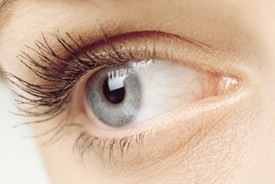
About LASEK Surgery
LASEK stands for laser-assisted in situ epithelial keratomileusis. It is a surgery that will reshape the cornea, improving the way that light passes through the eye so that it properly focuses on the retina. We often perform LASIK at our South Dakota vision correction and eye care center on patients who are not good candidates for LASIK surgery.
How LASEK Differs from LASIK
During Rapid City LASIK, a small flap is created in the uppermost surface of the cornea. This is usually accomplished through the use of an instrument called a microkeratome or a specialized laser. Through this flap, the surgeon is able to reshape the cornea as needed.
During LASEK surgery, a special alcohol solution is used to create a much thinner corneal flap in order for the surgeon to access and recontour the cornea.
Ideal Candidates for LASEK Surgery
The best candidates for LASEK are people who are otherwise good candidates for LASIK but have corneas that are thin. A traditional corneal flap cannot be created when patients have corneas that are too thin.
Preparing for LASEK
Prior to LASEK surgery, our optometrists and ophthalmologists in Rapid City will ask that patients stop wearing their contact lenses. Contact lenses can affect your cornea shape, and keeping contacts off for a few weeks will allow your corneal shape to return to normal before surgery. On the day prior to surgery, patients are asked to make sure that they do not wear any makeup around the eyes and avoid using lotions and creams around the eyes as well.
The LASEK Surgery Procedure
During the LASEK procedure, special eye drops are used to ensure patients do not experience any discomfort or adverse pain. The alcohol solution is used to create the thin flap, and the surgeon then carefully reshapes the cornea with a special laser. The flap is set back in place to heal.
Recovering from LASEK Surgery
It’s important that patients avoid reading, using the computer, watching television, or engaging in any activities that may cause eyestrain for the first 24 hours after surgery. Some discomfort is common, and patients are asked to not rub their eyes should they experience any irritation or pain.
Avoid direct sunlight, and be sure to wear sunglasses when outdoors to protect your eyes from damage as they heal. We also recommend that patients avoid taking showers for that first 24 hours and take baths instead. This will prevent complications from water getting into the eyes.
Alternatives to LASEK Surgery
Though LASEK makes it possible for people not eligible for LASIK to undergo refractive surgery, it may not be the right answer for you. In some cases, another refractive procedure known as PRK may be more ideal. We can discuss all options in more detail during your visit.

